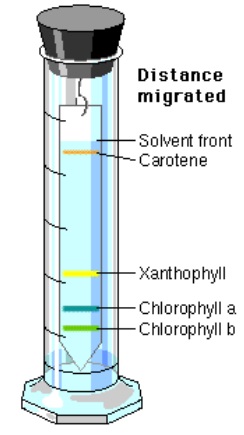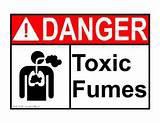|
Activity 3.1 Independent reading exercise
In this part, students develop their understanding of the structure and functions of chloroplasts (students are provided with the relevant text), after what they answer the questions (individually). Questions are discussed afterwards in the class.
Activity 3.2 Experiment: Plant pigment chromatography4
| In this stage students conduct the experiment using paper chromatography technique in order to separate plant pigment substances in a mixture based on the movement of the different substances up a piece of paper by capillary action. Beta carotene is carried the furthest because it is highly soluble in the solvent and because it forms no hydrogen bonds with the chromatography paper fibers. Xanthophyll contains oxygen and does not travel quite as far with the solvent because it is less soluble than beta carotene and forms some hydrogen bonds with the paper. Chlorophylls are bound more tightly to the paper than the other two, so they travel the shortest distance. Spinach leaves are given only as an example. As a solvent, the mixture of acetone and ethanol (1:1) or petroleum ether and acetone (92:8) is used. |
Expected results:



Attention: Students must be warned to keep the bottle tightly closed except when one is using it because the solvent is very volatile and produces fumes.
|
4This practical work is adapted from http://www.phschool.com/science/biology_place/labbench/lab4/design1.html |


